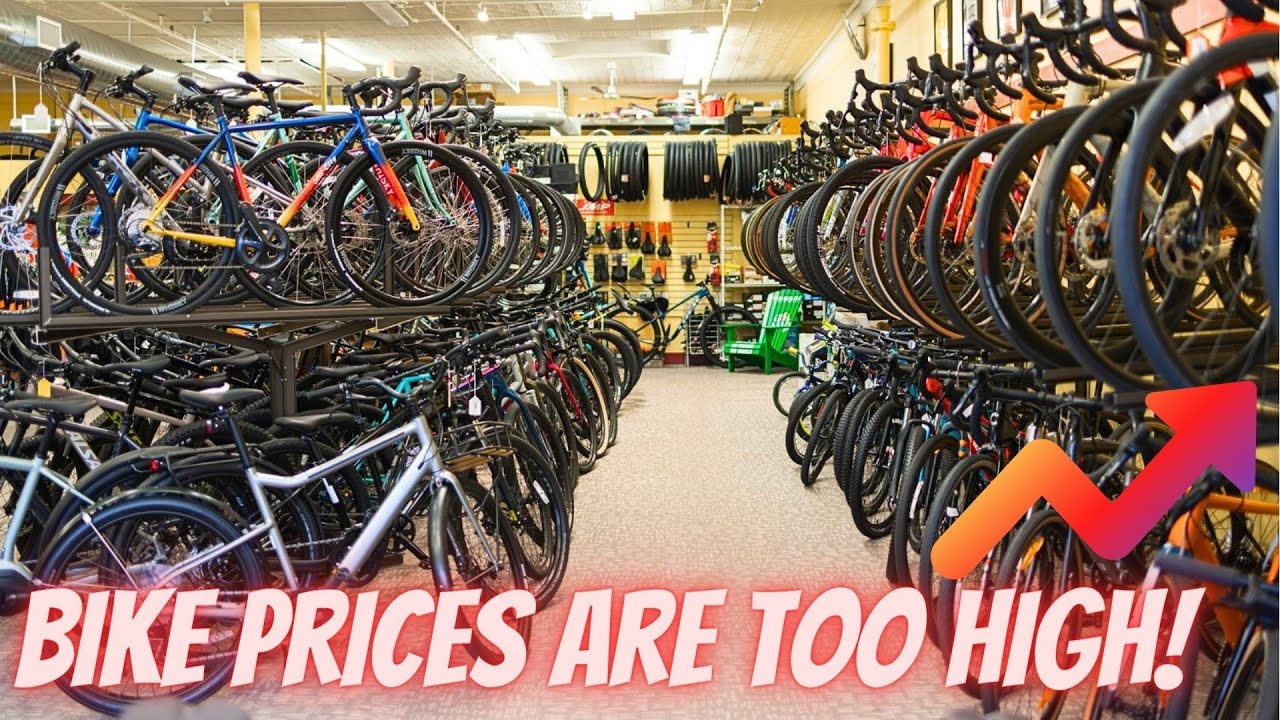ARE BIKE PRICES THE REASON FOR THE BICYCLE INDUSTRY FAILING?? with GC Performance
Source: GC Performance Youtube Channel: ARE BIKE PRICES THE REASON FOR THE BICYCLE INDUSTRY FAILING??
Video ARE BIKE PRICES THE REASON FOR THE BICYCLE INDUSTRY FAILING?? with GC Performance
Video ARE BIKE PRICES THE REASON FOR THE BICYCLE INDUSTRY FAILING?? with GC Performance YouTube Channel.
ARE BIKE PRICES THE REASON FOR THE BICYCLE INDUSTRY FAILING??
The Bicycle Industry: Understanding the Factors Behind Rising Bike Prices
The bicycle industry has been facing significant challenges in recent years, with many companies facing financial troubles and inventory piling up. The issue has garnered a lot of attention, with many people attributing the problems to the exorbitant prices of bikes. The sentiment is that corporate greed has led to skyrocketing bike prices, making it unaffordable for the average consumer. However, a closer look at the factors driving these high prices reveals that there is more to the story than meets the eye.
The Impact of Inflation on Bike Prices: A Closer Look
In a recent YouTube video, the issue of rising bike prices was brought to the forefront, sparking a lively discussion among viewers. Many expressed frustration at the high cost of bicycles, attributing it to corporate greed and an attempt to exploit consumers. However, it is essential to understand the broader economic factors at play that contribute to the steady rise in bike prices.
The narrator of the video points out that while bike prices are indeed high, it is not an isolated phenomenon. Inflation has impacted every aspect of daily life, from housing costs to groceries and transportation. The increase in the cost of living has been felt across the board, and the bicycle industry is no exception.
Acknowledging the Reality of Rising Prices
It is important to acknowledge that the reality of the current world economy has led to a significant increase in the cost of living. The narrator provides a personal perspective, highlighting the impact of inflation on his own expenses, including mortgage payments, fuel costs, and grocery bills. This relatable insight underscores the broader economic forces at work that have led to a general increase in prices across all sectors, not just the bicycle industry.
Evaluating the Influence of Other Factors on Bike Prices
While inflation is a significant factor contributing to rising bike prices, other elements also play a role. The narrator points to a fellow YouTuber’s video that delves into the specific dynamics shaping the bike market. The video explores the impact of inflation on top-tier bike prices, with examples such as the Specialized Tarmac SL7, which saw a significant price hike due to market conditions.
Illuminating the Historical Context of Bike Prices
To provide a more comprehensive understanding of the issue, the narrator delves into the historical context of bike prices. Drawing on their extensive experience in the bicycle industry, spanning over a decade, the narrator shares insights into the long-term trends that have shaped bike pricing. The historical perspective reveals that high bike prices are not a recent development but have been a characteristic feature of the industry for many years.
Examining Specific Examples of Bike Prices Over Time
To illustrate the continuity of high bike prices, the narrator offers specific examples of top-tier bikes from previous years, such as the Specialized S-Works Tarmac SL4 with an initial price of $10,500 in 2013. The narrator emphasizes that the target customer for a $10,500 bike a decade ago is similar to the customer willing to invest in a $14,000 bike today, highlighting the relative consistency of pricing in the top-tier segment.
Highlighting Advances in Technology and Product Offerings
Despite the persistent high prices, the narrator underscores the substantial advancements in technology and product offerings in the bike industry. The evolution of group sets and wheel technology is presented as evidence of ongoing innovation and improvement, with comparisons drawn between older bike components and their modern counterparts. This perspective offers a nuanced view of the value proposition inherent in today’s high-priced bikes.
Navigating Consumer Expectations and Affordability
The narrator addresses the tension between consumer expectations and affordability by contextualizing high-priced bikes within the broader landscape of consumer goods. The comparison between a 2012 Pinarello Dogma 65.1 at $12,500 and a contemporary high-end bike priced at $15,000 demonstrates the enduring premium positioning of certain brands in the market. The narrator challenges the notion of entitlement to top-tier products, emphasizing the existence of more affordable options while acknowledging the allure of premium offerings.
Analyzing the Impact of Overstock and Inflation
The video’s narrative shifts to an examination of the industry’s recent challenges, specifically the impact of overstock and inflation. The narrator highlights the detrimental effects of overordering and overprojecting, exacerbated by the unforeseen disruptions caused by the global pandemic. The resulting excess inventory and diminished consumer demand have substantially contributed to the industry’s challenges, beyond the scope of corporate greed or deliberate price manipulation.
Presenting a Contemporary Comparison of Bike Prices
To provide a current perspective on bike prices, the narrator offers a detailed comparison of modern high-end bikes, such as the Trek Madone and the Specialized Venge Pro. By juxtaposing the features and price points of these contemporary models, the narrator reinforces the value proposition of modern bikes relative to their historical counterparts. This comparison aims to recalibrate perceptions of bike prices within the context of technological advancements and evolving consumer preferences.
Seeking Audience Feedback and Engaging in Dialogue
The video concludes with the narrator inviting viewer input and fostering engagement with the content. By inviting feedback on their analysis, the narrator encourages a dialogue surrounding the complex dynamics of bike pricing. The open-ended question posed to the audience encourages critical reflection and diverse perspectives, enriching the ongoing discourse on the challenges and opportunities facing the bicycle industry.
In conclusion, the video offers a comprehensive analysis of the factors contributing to rising bike prices, debunking simplistic narratives of corporate greed. By contextualizing the issue within broader economic forces, historical trends, and technological advances, the video effectively navigates the complexity of bike pricing dynamics. Furthermore, by engaging viewers in dialogue, the video fosters a nuanced and reflective approach to understanding the challenges and opportunities within the bicycle industry.
The opinions expressed in this space are the sole responsibility of the YouTube Channel GC Performance and do not necessarily represent the views of CicloNews.










